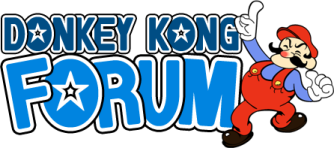Mitch, you should reread your own link. Notice the bold -- there are only 3 good frames within a 5 frame window.
I realized I had misread the post to say 4 possible frames as Dean was posting, and I was trying to edit it before Dean posted, but he beat me to it! And even with that mistake, I had made another by using 8 frames, when I should have used 7.
So with this correct setup, you have 5/60 of a second, which is .08333 total seconds to get as many mashes in as you can. If you can get 3 smashes in, you have a 1- (2/5)^3=93.6% chance on average of making the jump. 2 smashes is 84% chance. 1 smack is obviously 60%. However, these percentages assume a sort of 'random selection type' probability and are therefore just rough estimates. The specific nature of your actual pressing rate, that is,
how your 1, 2, or 3 mashes fit into the timeframe (e.g. was your rate relatively consistent? were all the smashes bunched together in only one area of the timeframe?), can affect your results in either direction.
If I had to guess, and account for all the mashing rhythms and mashing rates, I'd say most people who have already gotten the timing down and are trying to mash their best would probably tend towards getting 2 mashes in. about an 80% success rate sounds reasonable. The fact that someone like Mark has gotten a perfect run is probably just him getting lucky many times in a row during that one game.
The springboard is broken -- and a lot of these players who talk about it probably don't even know it. It's spoken about like it's just another difficult aspect of the game's design that can be learned (like MASTERING the springs in DK, for example) -- and yet, it's not. Unlike the springs in DK (or any other difficult but legitimate game design) the springboard actually doesn't work correctly.
To know that the springboard is 'broken' and doesn't work 'correctly' it would seem one would have to make a judgment about the intent of the programmers. I'm sure they had people test the game out, and I'm sure most the people that tested it out weren't experts at T&F mashing, so if the programers heard any word back about how the game was maybe 'broken' or lacking with respect to the springboard, why didn't they 'fix' it? It seems more likely that the programmers would have known about it (at least after some testing) and where ultimately ok with how it has ultimately ended up.
As far as I've heard, a key component to DKjr's 'clunkiness' is that it only registers inputs on every other frame. The programmers wanted this feel -or at least for this to be a fundamental aspect of the game. However, to have this 'clunkiness' aspect but also make the springboard a timing-based element to the game, necessarily created the added fact that the spring jump would also be luck based. It seems to me the intention was likely just that: To make the springboard timing based. However, they also had to be ok with the effect that their other desire for the game had on that aspect of the game (the springboard) as well. It was probably a compromise from their point of view, but it appears they were ultimately satisfied with it. It seems too bold to call it 'broken' or in-'correct' to me.






